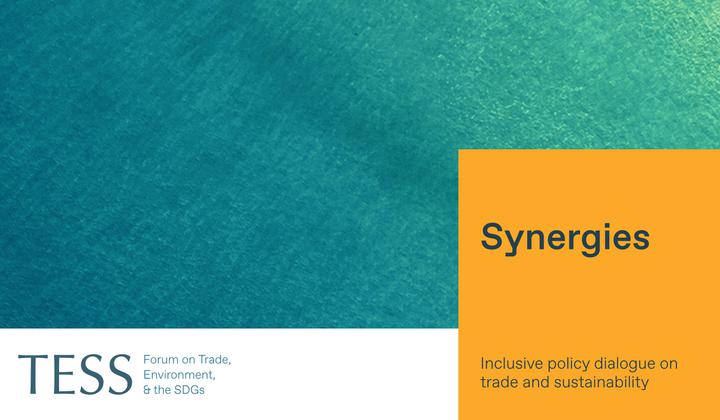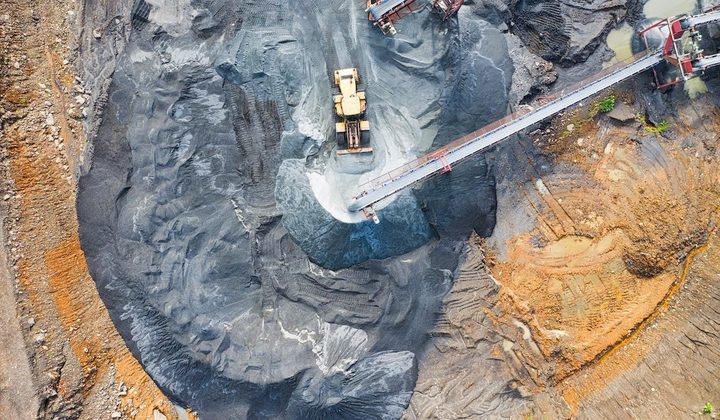Increasing global attention is being placed on critical minerals crucial to the development of technologies needed for the green transition. However, bids to de-risk global supply chains by moving production away from China will likely add challenges such as extra costs and social inequity. These challenges highlight the need for cooperative frameworks and supply chain partnerships, particularly by those wanting to lead on climate action.
Disclaimer
Any views and opinions expressed on Synergies are those of the author(s) and do not necessarily reflect those of TESS or any of its partner organizations or funders.
-----
Barely a day goes by without one or more governments announcing a plan to diversify and create sustainable, resilient clean energy supply chains. The stated rationale typically invokes economic security and some variant on the theme of a fast-evolving and geopolitically charged global resources landscape involving trade in critical minerals. Recent examples include the EU’s Critical Raw Materials Act, or Australia talks with India on critical mineral trade.
The International Energy Agency (IEA) has highlighted a number of minerals required for clean energy technologies. Individual governments' designations will vary according to national priorities, natural resource endowments, or vulnerabilities.
Recent breakthroughs in sodium-ion battery technology underscore how scientific innovation might alter the utility of a given mineral. Circular economy efforts to improve the resource efficiency, reuse, and recycling of critical materials will also play a role in meeting a portion of supply needs.
Nevertheless, as things currently stand, lithium, nickel, cobalt, manganese, and graphite are key to the performance, longevity, and energy density of batteries. Rare earth minerals are essential components of wind turbines and electric vehicles, and copper and aluminium permeate nearly all electricity-related technologies.
The IEA estimates that on current trends overall mineral requirements key to the climate transition could double by 2040.
The energy sector accounts today for over two-third of global greenhouse gas emissions. Global energy demand is set to increase as living standards rise across much of the growing global population. The IEA estimates that on current trends overall mineral requirements key to the climate transition could double by 2040, and to meet the climate goals set out in the Paris Agreement, these requirements would quadruple. These are set to increase further following pledge at COP28 among more than 100 countries to triple energy capacity by 2030.
Although clean energy deployment on the necessary scale will require a significant increase in mineral extraction and processing, the current debate over supply security is driven as much by scarcity concerns as parallels drawn by hawkish commentators with Europe's dependencies on Russian gas, or China's dominant market position in many critical mineral supply chains, especially but not only in processing.
While these dependencies differ in nature, it is ill-advised to be overly dependent on any one state for any critical inputs, especially a country with whom you have serious geopolitical and economic tensions. The EU, for example, stipulated that no more than 65% of any key raw material should come from any single country in its Critical Raw Materials Act.
Market Forces Alone Will Not Resolve Some Critical Minerals Dilemmas
First, it will be challenging to reach any global consensus as to which minerals are deemed critical. There is also little consensus on, or even understanding of, how best to reconcile the national pursuit of supply resilience—often framed as a contest against geopolitical rivals—while still keeping the cost of decarbonization manageable at the speed required, and ensuring that those same rivals can access the materials needed to reach global climate goals. You might wish to run a country out of polite society, but you cannot run them off the planet.
In the current climate, talk of a multilateral approach or even less structured global cooperation can sound naïve. Many major economies like the G7 have responded to geopolitical strife by viewing supply security mainly from the zero-sum, mercantilist lens of national industrial policy, emphasizing access to critical mineral supply chains for their own burgeoning industries tied to local content requirements and jobs. Yet framing the need for supply security solely through narrowly defined vantage points ignores several key issues at one’s peril.
Many major economies lhave responded to geopolitical strife by viewing supply security mainly from the zero-sum, mercantilist lens of national industrial policy.
First, regardless of geopolitical leanings, attempts to de-risk global supply chains by moving production away from China will likely, in the immediate term, add costs and inefficiencies that may hinder the speed of global uptake of clean energy technologies.
Even though many countries are moving heaven and earth to acquire or build this manufacturing capacity, ultimately no countries or even regions can be self-sufficient when it comes to the full range of raw materials and processing facilities needed for the energy transition. You can’t do it alone, even within the purview of “climate clubs” given the diversity of needs. Diversifying and deconcentrating production also makes interdependence harder to weaponize and supplies less vulnerable to a given shock. A bottleneck anywhere in the world can cause price spikes, triggering negative political reactions. Supply security is not just about physical access, it is also about price and affordability.
No countries or even regions can be self-sufficient when it comes to the full range of raw materials and processing facilities needed for the energy transition.
Second, as the pace of energy transition hastens, it is also evident that the same barriers to scaling clean energy investments are also pertinent to that of critical minerals projects. As the case of renewable energy demonstrates, compelling and science-based rationale does not suffice in mobilizing capital when production will likely take place in regions of high political risk. This implies a framework that helps safeguard the environmental and social bar in new extractive projects.
Third, whether it is equity, or necessity, demonstrating how mineral development will bring positive social benefits on the ground not only for the elites is a must—not only because it is the right thing to do but because it will strengthen the resilience of resource security.
Without a cooperative outlook or incentive framework, the spectre of export restrictions could also continue to dampen prospects to scale and speed deployment of clean energy, as illustrated the case of Indonesia for nickel and that of China for germanium and gallium.
Last but not least—while it suits the call for go-it-alone
nationalism—the development of parallel technology systems could be cost
ineffective and cumbersome in ways that further slow the deployment of
clean tech at the pace needed.
If mineral-producing countries limit access to those who would process on-site, it could undermine the scale economy and drive costs up.
Of course, the world is beset with duelling imperatives. Western governments are stepping up in their quest to dominate the production of the next generation of green tech, with developing countries at best deemed trusted suppliers of raw materials—feeding concerns about a new colonialism. Yet if mineral producing countries would limit access to those who process on site, it could undermine the scale economy and drive costs up.
Cooperative Frameworks Needed for Critical Minerals
All these challenges highlight the need for cooperative frameworks that could start as open alliances or partnerships comprising some or all of the following elements:
- Joint investment frameworks with blended finance mechanisms that reduce risk and the cost of capital that would help spearhead and sustain investments in new projects extracting and processing critical minerals.
- Guiding principles for partnerships with mineral-rich developing nations for investors and development finance institutions that incentivize not only extraction but also backward and forward linkages with a view to enhancing domestic industrial capacities and enabling more countries to move up the value chains—while also ensuring sustainability and social standards.
- A voluntary peace clause among coalitions of the willing over the use of export controls and restrictions for these critical minerals, metals, and materials with a view to expanding this group over time.
- Principles and support mechanisms including finance to embed circularity in future supply chains.
- Benchmarks and voluntary standards for sustainable mining and tech hub/pool/partnership for sustainable mining and processing technologies.
The Financial Times recently described the current geopolitical order as that of an à la carte world, where any prix-fixe menu of assumed allegiances is open for challenge and may be eschewed, in this case especially by developing economies with large mineral endowments. In this context, it is safe to assume that any cross-border cooperation will likely take place only in the form of ad hoc, case by case alliances or groupings, or what are often described as the coalitions of the willing or the capable.
This is why, rather than go it alone or divide up the world in a new “land grab” for control over critical resources, economies that profess to want to lead on climate action and the clean energy transition, such as G7 countries, should seek supply chain alliances and partnerships, open to all and any to join, that would embrace the five principles outlined above.
-----
Bernice Lee is Hoffmann Distinguished Fellow for Sustainability, Chatham House. She is a member of the TESS Steering Committee.
An shorter version of this article was first published by the World Economic Forum Agenda and also Chatham House.
-----
Synergies by TESS is a blog dedicated to promoting inclusive policy dialogue at the intersection of trade, environment, and sustainable development, drawing on perspectives from a range of experts from around the globe. The editor is Fabrice Lehmann.
Disclaimer
Any views and opinions expressed on Synergies are those of the author(s) and do not necessarily reflect those of TESS or any of its partner organizations or funders.
License
All of the content on Synergies is licensed under a Creative Commons Attribution-NonCommercial-ShareAlike 4.0 International (CC BY-NC-SA 4.0)
license. This means you are welcome to adapt, copy, and share it on your platforms with attribution to the source and author(s), but not for commercial purposes. You must also share it under the same CC BY-NC-SA 4.0 license.
If you would like to reuse any material published here or if you have any other question related to Synergies, send an email to fabrice.lehmann@graduateinstitute.ch.



